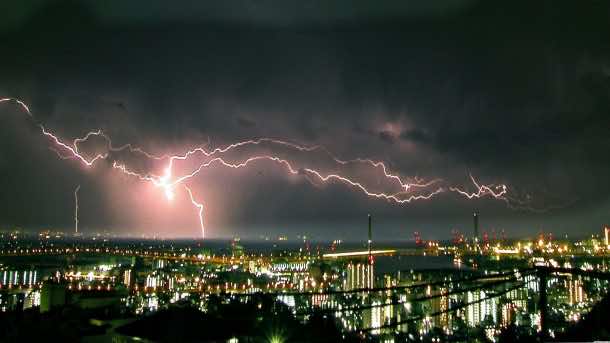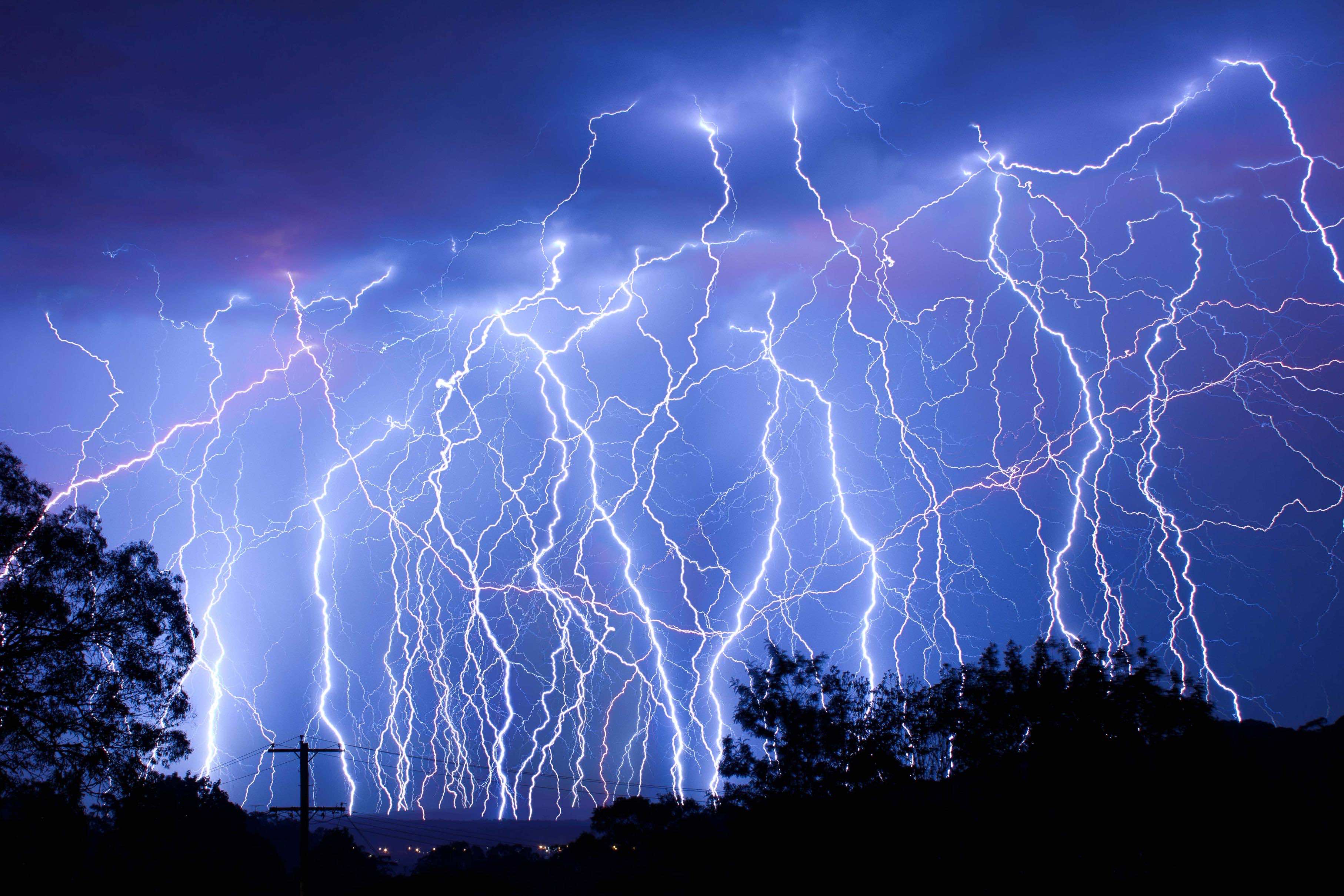You recheck your supplies list, make final travel route decision and pack all your bags for a nice afternoon picnic. Just before you leave, you look at the weather forecast, and see a remote chance of some thunderstorms in a few hours. Backing your luck, you go anyway, hoping against hope that this is one of those miscalculated, over cautious report. If this turns out to be the case then it’s a hurrah for your sixth sense; but what if the weather forecast was right? What if you are caught out in the open, with angry, thunderous clouds approaching fast! Do you stay near the lake on the picnic spot? Or hide under a nearby tree? Or not be scared at all, after all it is just lightning and a drizzle?
WRONG! Lightning is never to be taken lightly, and the numbers ahead will prove to you why. Most of the people err in judgement when encountered with such a scenario, and usually this is a costly mistake!
Your best bet in this case is to find a concrete building or a roof. If no substantial, non-concrete shelter is nearby ONLY THEN get into your car and wait out the storm. In this article, we will give you some great tips on how you can remain safe by taking simple precautions.

Risks of Lightning Strikes
Although the odds of someone being struck by lightning are only around 1 in 500,000, it is still not worth taking the risk. Some factors can add to this possibility and puts you in a greater vulnerability. Lightning most often strikes people who are caught in a storm in the open or are engaging in outdoor/recreational activities. Seasonal and climatic conditions can also affect your risk of being injured by lightning.
Colorado, Arizona, Missouri, Georgia, New Jersey, North Carolina, Alabama, Florida, Texas and Pennsylvania have the most lightning deaths and injuries. Florida is the macabre “lightning capital” of the country, recording over 2,000 lightning injuries over the past 50 years.
The consequences of lightning strikes are serious, which range from light burns to death. Lightning is one of the biggest means of weather-related deaths. So what can you do to save yourself from getting hit by this unforeseen disaster?

Protect Yourself from Lightning Strikes
You can protect yourself and reduce the risk by following simple guidelines and taking some sensible precautions!
Safety precautions if you are outdoors
- Always check the weather forecast before leaving the home. If it predicts thunderstorms, don’t take a chance and postpone your trip or activity.
- Remember this catchy phrase: When the thunder roars, always run indoors! In simple words, try to find a safe, enclosed shelter in case you are caught amidst a thunderstorm.
- The lightning safety guide is based on the 30-30 rule. This dictates that after you see lightning, start counting to 30. If you hear the thunder before you reach to the count of 30, take a safe shelter as soon as possible. Suspend any activity for at least 30 minutes after the last roar of thunder, as this means the thunder is dangerously close and threatening.
- In case you are caught in the open when no shelter available, crouch low and make sure you touch as little of your body with the ground as possible. This is because lightning can cause electric currents to flow along the top of the ground, and these can be deadly over 100 feet away.
- Take a shelter in a concrete building, but try not to directly touch the walls or the floor. Lightning can travel through any metal wires or rods etc. embedded in the concrete walls in case the lightning strikes. About one-third of lightning-strike injuries occur indoors, so you need to be cautious even when you are indoor and there’s a storm brewing.

Picture Credits: koowallpapers
Safety precautions indoors
- Avoid any kind of water related activity during a thunderstorm. Lightning can travel through plumbing as quickly as it can through wires.
- Avoid using electronic equipment of all kinds. Lightning usually travels through electrical systems like the radio and the television reception systems, and fry them while possibly hurting you.
- Avoid using landline and corded phones. If you need to use a phone, cordless or cellular ones are safer.
- Avoid direct contact with concrete floors and walls. Wear dry, rubber slippers and sit on a wooden or plastic chair indoor.
Lightning strikes may be rare, but they do happen. You don’t want to be the 1 out of 500,000 who is hit, as it comes with the risk of serious injury or death. So take thunderstorms seriously!
You can watch the video to learn and follow the safety rules in order to keep yourself safe from lightning strikes.
Have any more safety tips? Comment below!


